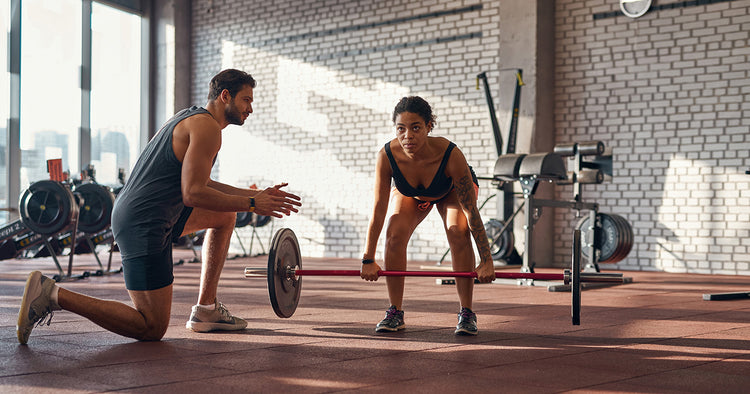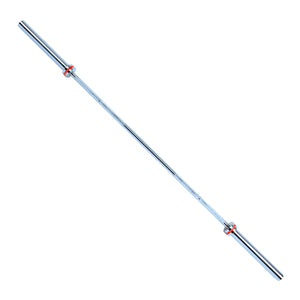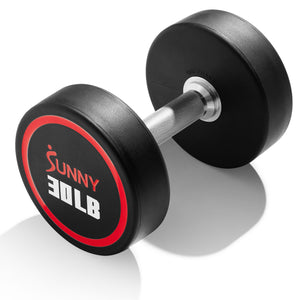“Tried and true.” It’s a wonderful expression, and the things it describes are similarly wonderful.
Today, we’re going to discuss some of the most tried-and-true exercises in our fitness arsenal:
- The Squat
- The Bench Press
- The Deadlift
- The Overhead Press
- The Row
By the end of this article, you will have a good idea of how to implement a full compound lift workout plan.
What makes these movements so great? Their greatness derives from one main characteristic: they are all compound lifts, meaning each of these exercises involves multiple joints and muscle groups.
But are they really better? Try this on for size: in general, compared to isolation, or single-joint exercises (which also have their place, as you’ll soon see), compound lifts will:
- Involve more muscles, therefore building more muscle mass overall(1-4)
- Involve larger muscle groups, such as the back and thighs(1-4)
- Burn more calories during the movement(1-4)
- Burn more calories after the movement by increasing your active tissue and therefore metabolism(1-4)
- Strengthen your joints(1-4)
- Cause more cardiovascular engagement, improving heart health(1-4)
- Build core strength(1-4)
- Increase injury resistance by strengthening everyday movement patterns(1-4)
- Improve hormonal profiles(1-4)
- Build mental toughness(1-4)
- Improve balance(1-4)
- Build more bone density(1-4)
You want me to go on? Oh...you want to get on to the Compound Lift Workout Plan? Hold on there, partner. First, let’s talk about how this article is laid out.
Overview
We’ll take ‘em one compound lift at a time. First, I’ll give you a quick overview, followed by some helpful information.
Cues
Cues are words or phrases that relate to certain physical and mental aspects of the movement. Cues allow you to focus your attention on one thing that can strengthen your movement pattern and help you push through its most difficult elements. Not all cues work for all people, and if you don’t fully understand one of them, ask your fitness professional to clarify.
Accessory Movements
Compound movements involve many different muscles, and often, one or more of these muscles are a limiting factor in improving the compound lift. Accessory movements are exercises that build these specific muscle groups. Sometimes they are also compound lifts, and other times they are isolation lifts. Regardless, their main purpose is to improve athletic performance.
Variations and Modifications
It’s important to get comfortable with compound lifts in their simplest forms before introducing variations. However, for the casual lifter, having a few exercise variations in your back pocket is a good way to minimize workout monotony and boredom.
Example Workout
At the end, I’ll give you two full workouts. One fits into a Push/Pull/Legs framework, while the other is an Upper/Lower routine.
Now that all that’s out of the way, LET’S DO THIS!
The Bench Press
Overview
The Bench Press belongs in any compound lift workout plan since it is the king of all horizontal pushing movements. This just means you’re pushing away from your body as though you were doing a pushup. It mainly works the chest, triceps, and front deltoids, but it also builds elements of the back and core muscles as well. These muscles need to remain engaged to create stability throughout your body during the movement.
Cues
- “Down and Back”
- “Pull the bar apart”
- “Tuck Your Shoulders Into Your Back Pockets”
Accessory Movements
- Dumbbell Bench Press
- Upright or Bent-Over Dip
- Close-Grip Bench Press
- Dumbbell or Machine Fly
Variations/Modifications
- Incline Bench Press
- Reverse Grip Bench Press
- Floor Press
- Illegal Grip (Extra-Wide) Bench Press
The Squat
Overview
Any compound lift workout plan also requires the squat, specifically the barbell back squat. Why? Because it builds strength and lower body musculature, primarily in the quadriceps, but also in the glutes, hamstrings, and a dash of calves. You can also expect upper and lower back engagement, plus the core. The squat is a true powerhouse and a massive bang-for-your-buck exercise. Best of all, it mirrors common everyday movement patterns. Don’t miss it!
Cues
- “Chest up”
- “Knees out”
- Low-Bar (the barbell sits further down on your upper back): “Drive your hips up”
- High-Bar (the barbell sits across your shoulders): “Push [Your Feet] Through the Floor”
Accessory Movements
- Lunges
- Lying Leg Press
- Front Squats
Variations/Modifications
- Front Squat
- Pin/Pause Back Squat
- Low-Bar: Box Squat
- Low-Bar: Good Morning
The Deadlift
Overview
The deadlift is one of the best movements you can do to build strength through your posterior chain. This means that it works the majority of your muscles on the back of your body: the upper back (including the traps), lower back, glutes, and hamstrings. It also increases grip strength while mirroring an everyday movement pattern. Just like the squat, you are getting your money’s worth with this exercise.
Cues
- “Hinge at your hips”
- “Send your hips back”
- “Squeeze your glutes as you extend through the hips”
- “Engage your core, and keep your back flat”
- Sumo Stance: “Spread the floor”
Accessory Movements
- Ball Ham Curl
- Romanian Deadlift
- Nordic Ham Curl
- Good Morning
Variations/Modifications
- Suitcase Deadlift
- Trap Bar Deadlift
- Romanian Deadlift (Conventional or Sumo stance)
- Deficit Deadlift (Conventional or Sumo stance)
The Overhead Press
Overview
The overhead press, or OHP, is a vertical pressing movement that aides in increasing shoulder and postural strength. One of the most important reasons to incorporate the OHP into your training regimen is that it has several everyday applications. (Think about it: do you push cars more often than raising heavy objects over your head? If so, word up to that!) The OHP builds your front and side deltoids, plus your upper chest, triceps (especially the long head), upper back, and core muscles. Surprisingly, this exercise even requires glute activation, as they need to stay unbelievably tight through the pressing movement, particularly during the standing version of this exercise.
Cues
- “Down to the Front”
- “Glutes/Quads Tight”
- “Get Under It”
- “Keep your neck long, and shoulders away from your ears”
- “Tuck [the Pelvis] Under”
Accessory Movements
- Overhead Triceps Extension
- Hollow-Body Hold
- External Shoulder Rotation
- Upright Rows
Variations/Modifications
- Close-Grip Overhead Press
- Arnold/Scott/W-Press (I prefer the Scott)
- Viking Press
The Row
Overview
There’s a reason the row is one of the most common compound lifts. Building strength in your upper back including the lats, rhomboids, trapezius, and rear delts, this exercise is efficient. Different row variations target each of these muscles in different ways, so choosing which row you use will depend on your individual goals. When done correctly, row movements improve posture. Bent-over barbell rows also build the lower back, which, coupled with strengthening your lats and grip, can contribute to a more successful deadlift movement.
Cues
- “Shoulders down and back”
- “Pull with your elbows”
- “Proud chest”
- "Open through your collar bones”
Accessory Movements
- Ball Cobra
- Dumbbell or Machine Rear Delt Flye
- Romanian Deadlifts (for lower back proprioception and endurance)
- Biceps Curls
Variations/Modifications
- Overhand or Underhand Barbell Grip
- Wide or Narrow Barbell Hand Stance
- Dumbbell Row (unilateral and bilateral)
- Pendlay Row
One Last Word Before the Workouts
It’s important to remember that compound lifts are highly challenging and tiring. So, if you start on one of these workout plans, learn to listen to your body. With strength oriented workouts, it’s good to do three weeks on, followed by a one week break. This is what’s called a de-load. De-load weeks allow you to make continuous progress by allowing your body to recover without “overreaching.” In other words, by taking time off proactively, it keeps you from being forced into taking time off, whether from exhaustion or injury. Who wants that? De-load weeks can be anything from active recovery/mobility work to complete rest. Experiment with your de-load week to find what works best for you.
Remember to eat a lot, hydrate like nobody’s business, and get lots of protein. Remember – it’s good to do exercises that push you out of your comfort zone, but lifting should also be fun.
One more important reminder: DON’T SKIP LEG DAY!
And Now, The WORKOUTS!
Push/Pull/Legs (PPL) Workout (6 Workouts Per Week)
Do 2-4 sets of 6-8 on the Main Lift and 3-4 sets of 8-12 reps on the accessory movements. Choose a weight for each rep range that is challenging for you by the end of the set. Start small and gradually build as you get stronger.
Notes: You have one rest day per week. You can add more accessories, arm work, core work, or calf work as needed as long as you can properly recover.
| Days 1-3 | Days 4-6 | |
| PUSH | Day 1: Bench Press Lateral Raise Dumbbell Fly Overhead Triceps Extension |
Day 4: Overhead Press Close-Grip Bench Press Upright Row EZ-Bar Skullcrusher |
| PULL |
Day 2: Row Dumbbell Lat Pullover Rear Delt Fly Barbell Curls |
Day 5: Pull-Up (modify with assisted pull-up if needed) Seated Cable Row Close-Grip Pulldown Cable Curls |
| LEGS |
Day 3: Squat Romanian Deadlift (RDL) Lunges Lying Leg Raise |
Day 6: Deadlift Leg Press Ball Ham Curl Incline Sit Up |
Upper/Lower (4 Workouts Per Week)
Notes: You have three rest days per week. Feel free to do core work before everything else on your Lower Days, or move it to Upper Days. But don’t skip it!
| Lower One | Upper One | Lower Two | Upper Two |
| Squat | Bench Press | Deadlift | Dips |
| Romanian Deadlift | Dumbbell Row | Lying Leg Press | Barbell Row |
| Leg Extension | Seated Overhead Press | Leg Curl | Lateral Raise |
| Incline Sit Up | Barbell Curls | Hanging Leg Raise | Cable Curls |
1. Rippetoe, M., & Kilgore, L. (2011). Starting strength: basic barbell training. 3rd ed. Wichita Falls, TX, Aasgaard Co. Accessed 9 October 2023.
2. Haff, G., & Triplett, N. T. (2016). Essentials of strength training and conditioning. Fourth edition. Champaign, IL, Human Kinetics. Accessed 9 October 2023.
3. Zatsiorsky V. M. & Kraemer W. J. (2006). Science and practice of strength training (2nd ed.). Champaign, IL, Human Kinetics. Accessed 9 October 2023.
4. Israetel, M., Hoffmann, J., Smith, C.W. (2019). Scientific principles of strength training. Laguna Niguel, CA, Juggernaut Training Systems. Accessed 9 October 2023.

Mark Ludas CPT is a NASM-certified personal trainer with a decade of experience in the fitness industry. After an asthmatic childhood, Mark discovered his natural aptitude for fitness in his late twenties. At age 36, he accomplished a 300+ pound conventional deadlift and 280+ high-bar squat as a 6’5” 170-pound ectomorph on a fully vegan diet, all after just one year of proper self-programming. Mark is the founder of Resistance Quest Fitness, established in 2016. Additionally, he is a writer, actor, model, and musician. Find him on Instagram, Facebook, Youtube, and at www.resistancequest.com.


























Add Your Name & Email
Please enter your name and email to continue.We won’t display your email publicly.